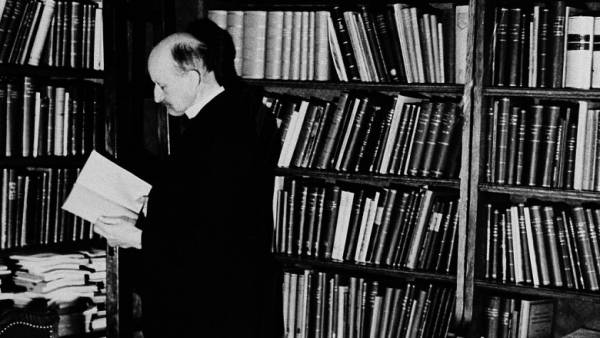As Max Planck has upended notions of reality and didn’t want myself to believe
April 23, 1858 Max Planck was born, whose research helped to overturn the concept of the structure of all things. TASS — great physics and the meaning of quantum theory.

Even while studying at the University, Max Planck abandoned the experiments and do theoretical calculations. Mathematics he studied with the Karl Weierstrass, who stood at the origins of modern mathematical analysis, and read the works of Rudolf Clausius laid the Foundation of thermodynamics. With such training, plank has already at the age of 29, he headed the Department of theoretical physics at the University of Berlin.
In late 1890-ies of the Max Planck worked on a mathematical description of the spectrum of a heated body. Hot nail with increasing temperature blush, yellow and finally white (hence the expression “to bring to a white heat”).
The color of a hot object depends on the wavelength of its radiation: each temperature corresponds to the peak of waves of a certain length.
At the end of the XIX century was already an equipment, allowing to analyze the heated body and to plot the radiation. But to generalize from these graphs the formula physicists did not succeed.
The task on the spectrum of a heated body was important for metallurgy and production of electric light bulbs, but from the point of view of fundamental science seemed to be something minor. Moreover, all physics, many scientists considered virtually complete. A few big theories — the atomic-molecular doctrine, electrodynamics, Newtonian mechanics is explained almost all the observed processes, from planetary motion to work the steam engine.
14 December 1900, a beautiful building of classical physics was shaken. At the meeting of the German physical society, Planck introduced the formula that allows to calculate curves of radiation.
To calculations agreed with the meter readings, the Bar had to go to the trick.
He admitted that the outpouring of rays by the atoms give up energy is not a continuous stream, and portions, or quanta. It was such a revolutionary idea that even the plank initially underestimated its potential.
Einstein picked up Planck’s idea
In 1905 came the hour, perhaps the most famous scientist in the world albert Einstein. Previously little-known clerk in the patent office published one after another three articles included in the history of physics: one is about the theory of relativity, the second on Brownian motion of particles under the action of impacts of individual molecules and the third, for which he was given the Nobel prize, the theoretical description of the photoelectric effect.
The photoelectric effect discovered by Heinrich Hertz and studied by Aleksandr Stoletov, is the emission of metal electrons in the light. This phenomenon albert Einstein explained with the help of those photons of that Bar seemed just a mathematical technique. Einstein considered these quanta particles of electromagnetic radiation, transmitting energy to the electrons in the substance and knocks them out.
Despite the fact that Einstein’s theory is consistent with experimental data, colleagues were skeptical. A brilliant experimental physicist Robert Millikan, to this who have measured the electron charge, spent about ten years to test Einstein’s statements and in the end was forced to agree with him. To come to terms with the existence of quanta was not easy and most the Bar. Like many, he believed that the division of radiation on the portions contrary to the classical theory of electromagnetism, with its waves and a number of experimental data.
The work of Planck on the spectrum of a heated body was the first argument against the use of classical physics for the description of the microcosm, and Einstein’s paper about the photoelectric effect and its theoretical description second.
The need for a new physics became obvious to almost all scientists.
 As schrödinger smeared microcosm
As schrödinger smeared microcosm
One of the issues over which they fought physics in the early XX century, was the structure of the atom. Shortly before he opened electron. This negatively charged particle present in the atoms. The experiments of the British physicist Ernest Rutherford in 1909 showed that atoms must be some positively charged, very small and massive nucleus. Two years later he built a model, where the electrons revolve around the nucleus. But the problem was that in this case, the electrons must emit waves from the atoms literally lit up, and the electrons quickly lose energy and fall down into the nucleus. In fact, does not occur neither one nor the other.
With the discovery of the atomic nucleus, the crisis in science has escalated so much that in 1911 almost all the researchers of the world values gathered at the international Congress of radiation and quanta. Most physicists recognized that the quantization of energy is something there, and began to Refine the model of the atom.
The Austrian Erwin Schrodinger guessed to describe tiny objects using smeared in the space of wave functions. The wave function has become a substitute for the classical particles with clear boundaries that can be represented in the form of solid balls. In contrast to the particles of the wave can scatter on obstacles or even to get under the barriers, impenetrable from the point of view of classical physics.